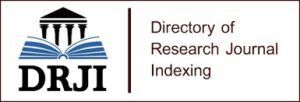Blood Exposure Accidents among Healthcare Workers at the Hassan II University Hospital in Fez, Morocco
Introduction and Objective: Blood exposure accidents (BEA)remain a current problem in the healthcare field. Its prevention must remain a top priority in healthcare facilities. The purpose of this study is to analyze blood exposure accidents that have been recorded in occupational medicine department, in order to determine the profile of these accidents and the mechanisms involved,with the aim of improving and correcting the prevention methods used by healthcare workers.
Materials and Methods: This is a descriptive cross-sectional study of surveillance based on the reporting of blood exposure accidents (BEA) by healthcare worker providers to the occupational physician at Hassan II University Hospital. Our objective is to describe the risk factors associated with BEA, their preventability through compliance to standard precautions, the involved procedures, the used prevention methods, as well as the potential prescription of antiretroviral chemoprophylaxis. The survey was carried using a standardized anonymous questionnaire, allowing the exploitation of the declaration files of the nursing staff working at Hassan II University Hospital between 2021 and January 2023.
Results: A total of 43 blood exposure accidents (BEA) were reported to the occupational medicine department. Among them, 26 cases (60.2%) were needlestick injuries, while 17 cases (39.8%) were cuts. The observed deficiencies are concerning in terms of non-compliance with standard and universal precautions, particularly the recapping of contaminated needles (57.5% of cases). Additionally, 29.3% of the staff do not dispose of contaminated instruments in the designated safety containers. In 2.3% of cases, gloves were not being worn at the time of the injury. These results show a lack of risk awareness due to insufficient training and awareness, as well as a lax attitude of the personnel towards BEA risks. The reported BEA cases only represent a small percentage of the circumstances at Hassan II University Hospital. These numbers are underestimated due to underreporting.
Conclusion: Faced with the systematic underreporting of blood exposure accidents, it is essential for occupational physicians to undertake a crucial task of providing good information to healthcare workers. This information must be continuous and renewed during each medical visit.
Keywords: Blood exposure accidents, healthcare workers, hygiene, safety, prevention.




















